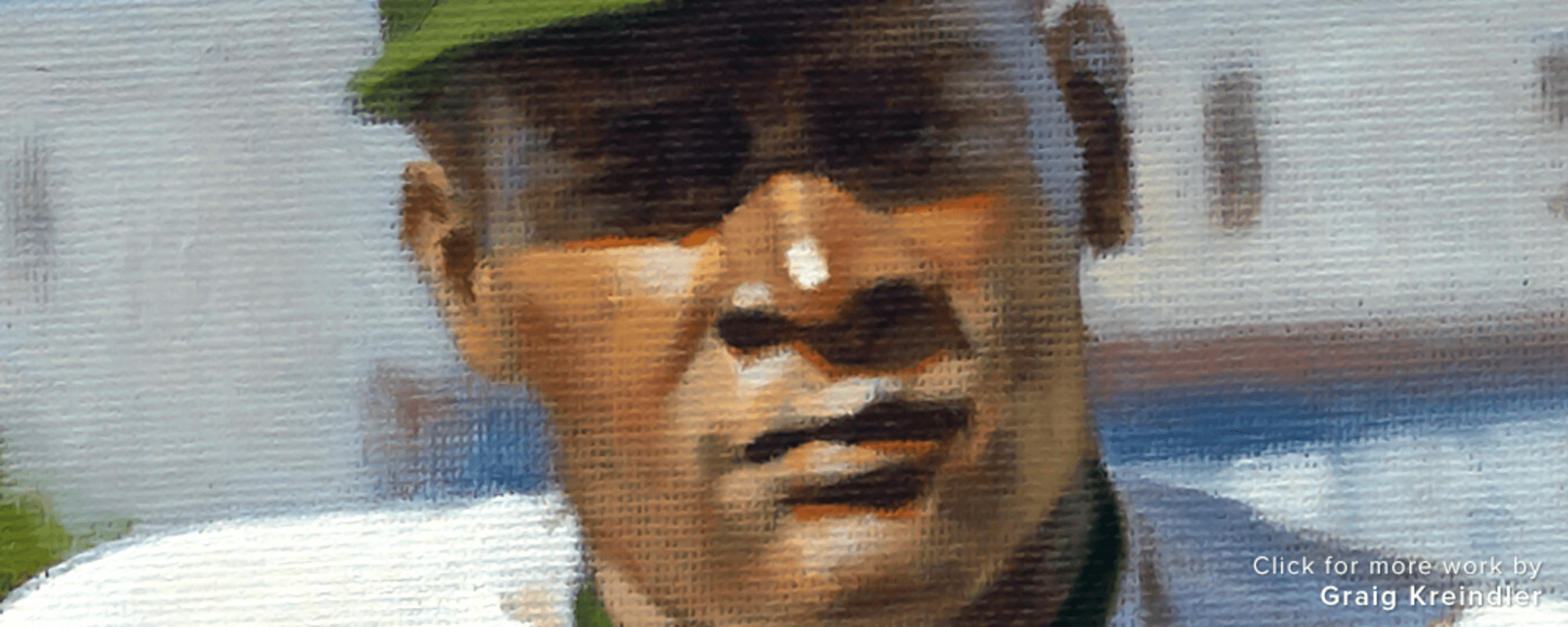


Records of Negro Leagues Baseball statistics are incomplete. The above was compiled using various sources including the Negro Leagues Database at seamheads.com after consultation with John Thorn, the Official Historian for MLB, and other Negro Leagues experts. In December 2020, MLB bestowed Major League status on seven professional Negro Leagues that operated from 1920-48. MLB and the Elias Sports Bureau are in the process of determining how this will affect official MLB records and statistics.
Torriente, 'Cuban Babe,' merits greater fame
By: Zach Silver | @zachsilver
"If I should see Torriente walking up the other side of the street, I would say, 'There walks a ballclub.'" -- Indianapolis ABCs manager C.I. Taylor
Few players in baseball history have received such universal admiration from their counterparts coinciding with such minimal mainstream recognition as Cristóbal Torriente. He was nicknamed the “Cuban Babe Ruth” (or, as some quipped back, Ruth was the “American Cristóbal Torriente”), partly for his legendary, almost-mythic outhomering of Ruth in a head-to-head series in Cuba, but mostly for his all-around excellence.
Torriente, a dual threat known mostly for his bat that never slumped, did everything with ease. He hit for power. He hit to all fields. He had deceptive speed, making him an elite player on the basepaths and especially in center field.
He once hit a ball so hard that it left a small crater in the ground next to Frankie Frisch at third base as it blazed into left field.
“I'm glad I wasn't in front of it,” Frisch recalled.
Torriente was everything you wanted in a ballplayer before such skills were broken down into 20-80 grade categories. He was in the inaugural class of the Cuban Baseball Hall of Fame in 1939 -- 67 years before he would receive such honors in Cooperstown, N.Y., where his grandnephew, Orlando Gonzales, was present for his long-awaited, long-deserved induction.
But he was not allowed to show any of that in the Major Leagues.
“Tell Torriente and [José] Méndez that if they could play with me in the Major Leagues, we would win the pennant by July and go fishing the rest of the season,” Ruth once said.
There’s also admittedly not much known about Torriente.
Take, for example, the performance that elevated him into lore. In 1920, the New York Giants, with Ruth -- a Yankee -- in tow, made a trip to Cuba and faced a variety of teams around the island as part of the American Series. There’s uncertainty about Torriente’s exact performance, but it’s reported that he out-homered the Bambino, 3-2, going 4-for-5 in an 11-4 win and adding a double to his homer for six RBIs on the day.
There’s also uncertainty about the end of his life. It’s believed Torriente died in New York City at the age of 44 in 1938. But the exact location of his remains has become an impassioned search for those of his hometown in Cienfuegos, and the focus of one individual trying to picture a “Hall Ball” at the grave site of every deceased Hall of Famer. It’s believed Torriente's remains are at El Cementerio de Cristóbal Colón in Havana, along with several other ballplayers.
What’s known is this: According to Seamheads.com, Torriente hit .342 across parts of 17 seasons in the Negro Leagues, including over .300 eight times. His Wins Above Replacement in the Negro Leagues, as calculated by Seamheads, is third all-time.
Torriente made his mark as part of Rube Foster’s Chicago American Giants, joining the club in 1919. Over the ensuing three seasons, the American Giants would win three Negro National League pennants; Torriente hit .417 in 1920.
But without much in the way of hard evidence, at least compared to some others from his time, take it from those who knew Torriente best: teammates and opponents. According to a survey published in “All-Time All-Stars of Black Baseball,” Negro Leagues players from 1900-50 -- including icons such as Buck Leonard, Don Newcombe and Buck O’Neil -- voted Torriente into an all-time outfield, next to Oscar Charleston and Cool Papa Bell. Martín Dihigo -- one of Cuba’s other greatest baseball exports -- was selected as the legacy team’s second baseman.
“Cristóbal Torriente is the best Cuban player that I have seen, the most complete before my eyes, including the Americans that came and those I met when I went to the United States,” Dihigo once said, according to a May 1987 Spanish edition of the Miami Herald.
Now any time a promising young ballplayer is rising through the ranks, talk always focuses on his tools. Can he hit for power? Does he possess good speed? Does he have range on defense?
Perhaps we should be asking ourselves those questions in a simpler way: Can they play baseball like Cristóbal Torriente played baseball?




